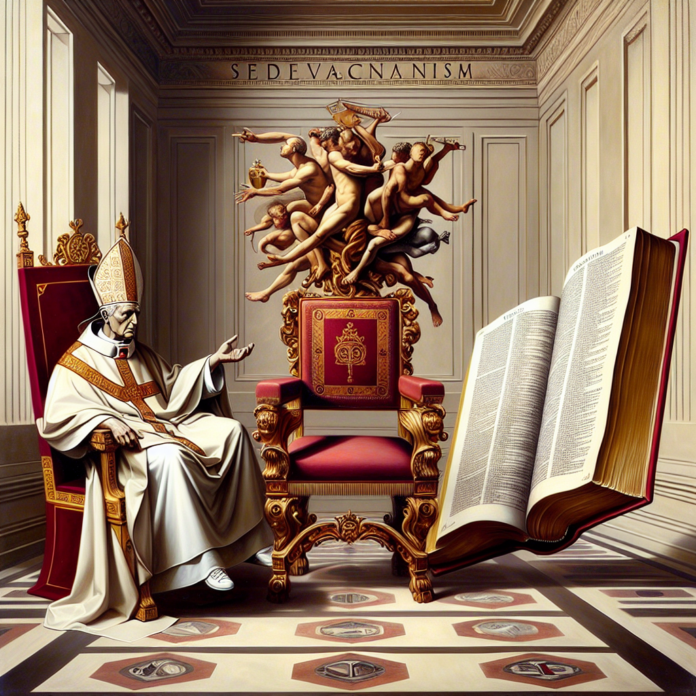Sedevacantism and Its Contradictions with Sacred Scripture: A Call for Progressive Faith
In the contemporary discourse surrounding Catholicism, the emergence of Sedevacantism—a movement denying the legitimacy of the papacy since the Second Vatican Council—stands as a contentious and divisive force. This sect claims that the papal seat is currently vacant because recent pontiffs have supposedly deviated from traditional doctrinal teachings. While this belief is an extreme manifestation of traditionalist Catholic views, it serves to highlight the broader tensions between conservative interpretations of the faith and the progressive, inclusive vision championed by Pope Francis.
Sedevacantism’s Theological Foundations
At the heart of Sedevacantism lies a rigid adherence to perceived traditional truths, leading to the outright rejection of perceived modernizations introduced by recent popes, particularly from John XXIII onwards. These modernizations include embracing ecumenism, advocating for social justice, and promoting inclusivity—principles underscored by Christ’s teachings in the Gospels. Sedevacantists argue that these changes signify a departure from the Church’s doctrinal roots, yet their stance directly contradicts Scripture’s emphasis on love, unity, and continuous spiritual growth.
Scripture and the Papal Succession
The narrative of papal succession is deeply rooted in Sacred Scripture, which underscores the enduring leadership of the Church established by Christ through Peter. In Matthew 16:18-19, Jesus tells Peter, "You are Peter, and on this rock I will build my Church, and the gates of hell will not prevail against it. I will give you the keys of the kingdom of heaven." By denying the legitimacy of successive popes, Sedevacantism undermines this foundational promise, ignoring the enduring guidance provided by the Holy Spirit in the Church’s evolution.
Historical Context and the Evolution of Doctrine
Understanding the historical context of doctrinal development is crucial in addressing Sedevacantism’s contradictions. Church history is replete with theological conflicts, from the Arian controversy to the Reformation. Each instance necessitated an evolution of doctrine to better reflect the needs of the faithful and the realities of the world. The Second Vatican Council, often regarded as the turning point for Sedevacantism, was a momentous effort to engage with the modern world and reinvigorate a faith that felt, to many, detached and insular.
Consider the Church’s historical stance on slavery, which evolved significantly over the centuries. What was once tolerated or ignored became a grievous moral offense, with the Church ultimately standing against such injustices. This evolution mirrors the biblical prophets’ call to act justly, love mercy, and walk humbly with God (Micah 6:8). Likewise, Pope Francis’s calls for a humble, servant Church focused on the marginalized echoes these prophetic teachings.
The Latin Mass and Cultural Conservatism
A significant focal point for Sedevacantism and traditionalist Catholics is the Latin Mass. While the Tridentine Mass holds deep historical and cultural significance, the reforms of Vatican II—which encouraged Mass in local languages—were intended to foster active participation and understanding. This progressive move highlights the Church’s mission to make the divine accessible to all people, breaking down barriers that once separated the clergy from the laity.
In clinging to the Latin Mass as a symbol of "true" Catholicism, some traditionalists inadvertently risk idolizing form over substance. Such an approach can obscure the living, breathing Gospel message, which calls for engagement with the world rather than retreat into ritualistic purism. Pope Francis’s emphasis on mercy, compassion, and outreach reflects this evangelical spirit, promoting a Church that prioritizes connection over preservation of tradition for tradition’s sake.
Promoting Progressive Values in Faith
Pope Francis embodies a progressive vision of Catholicism that resonates powerfully with Christ’s message. His critique of rigid conservative values places human dignity and environmental stewardship at the forefront, resonating with scriptural imperatives found in Genesis and the Beatitudes. By focusing on building bridges rather than walls, Pope Francis challenges the Church to transform and heal in a fractured world.
Sedevacantism, with its rejection of current papal authority and fear of modernity, positions itself antithetically to this transformative vision. It overlooks the central biblical narrative of redemption, which invites constant conversion and renewal. Pope Francis’s encyclicals like Laudato Si’ champion a faith that is dynamic and engaged with contemporary challenges, rooted in the scriptural call to be caretakers of creation and each other.
Conclusion: Embracing a Living Faith
In conclusion, Sedevacantism’s interpretations of tradition and modernity fail to coexist with the progressive values espoused by Scripture and embodied by the current papacy. By fostering an understanding of tradition as a living practice, not a static relic, the Church can better fulfill its mission of love and redemption in the modern world. As Catholics ponder their faith journey, embracing Pope Francis’ vision of an inclusive, vibrant Church offers a pathway aligning with the heart of the Gospel—one that calls for unity, compassion, and hope for all humanity.
